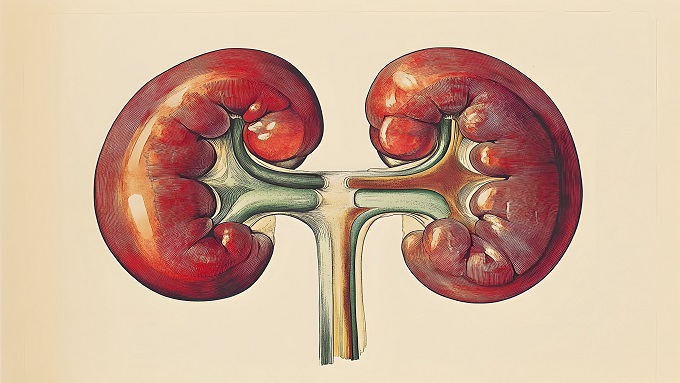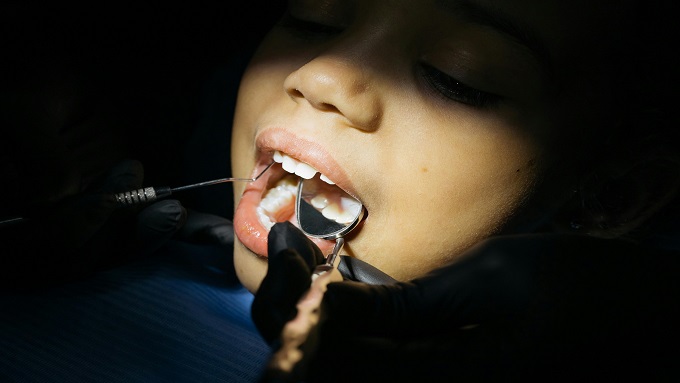THE PROFILE OF CHILDREN WITH CONGENITAL RUBELLA SYNDROME SUFFERING FROM HEARING DISORDERS IN DR. SOETOMO GENERAL ACADEMIC HOSPITAL, SURABAYA, INDONESIA
Downloads
Background: Congenital Rubella Syndrome (CRS) is an infection that can cause hearing loss which is commonly found in infants in Indonesia. The hearing screening of otoacoustic emission (OAE) and automated auditory brainstem response (AABR) is essential as an early screening to prevent speech and language development disorders which may reduce the social function of the patient in the future. Objective: To analyze the profile of children with CRS who suffer from hearing loss in Dr. Soetomo General Academic Hospital, Surabaya, Indonesia in 2015-2017. Materials and Methods: This research employed a descriptive retrospective study by collecting 118 secondary data from the medical records. Results: CRS was mostly found in 0-3 months age group (76 patients), and was dominated by males (62 patients). The most common signs and symptoms were congenital heart disease (49 patients), followed by hearing loss (37 patients). The serological results were mostly dominated by negative IgM and positive IgG (40 patients). The most dominant results of hearing screening test were OAE and AABR bilateral refer (45 patients). Conclusion: The profile of children with CRS suffering from hearing loss is various, depending on which country the research is conducted.
Adam, O., Ali, A.K.M., Hübschen, Muller, J.M., Claude P., 2014. Identification of congenital rubella syndrome in Sudan. BMC Infectious Disease, 14(2): 1–5.
Best, J.M. O'shea, S., Tipples, G., Davies, N., Al- Khusaiby, S.M., Hesketh, K.A., Louise, M., Jin, Li., Enders, G., 2002. Interpretation of rubella serology in pregnancy”pitfalls and problems. BMJ Journal, 325(7356):147.
Canadian Paediatric Society, 2007. Rubella (German measles) in pregnancy. Downloaded 20 November 2019 from https://www.ncbi.nlm.nih.gov/pmc/articl.
Canepa, P., 2009. Role of congenital rubella reference laboratory: 21-months- surveillance in Liguria, Italy. Journal of Preventive Medicine and Hygiene, 50(4): 221–6.
Cherow, E. 2000. Year 2000 position statement: Principles and guidelines for early hearing detection and intervention programs. American Journal of Audiology, 9(1): 9–29.
Ekorini, H.M., 2013. Pemeriksaan Otoacoustic Emission dan Brainstem Evoked Response Audiometry pada bayi dan anak. PERHATI-KL, 1(1): 1–16.
Ekorini, H.M., 2016. Skrining pendengaran bayi baru lahir dalam praktik klinis, Ilmu Kesehatan Bedah THT-KL RSUD Dr. Soetomo, 1(1)
Hardiana, A.T., Raksanagara, A.S., Judistiani, Rd., Tina, D., Bachtiar, W.D., Novilia S., 2015. Distribution and genotypic analysis of rubella virus in West Java on 2011–2013. Indonesian Journal of Clinical Pharmacy, 4(1): 1–7.
Hussain, N., Jaffery, G., Hasnain, S., Anwar, M.S., 2006. Seroprevalence of rubella IgG and IgM antibodies in infants suspected of having rubella infection. Biomedica, 22(1): 25–30.
Ministry of Health, Republic of Indonesia, 2019. Imunisasi MR penting diberikan untuk anak [MR immunization is important for children]. Downloaded : 20 November 2019 from http://www.depkes. go.id/article/view/17081400003/imunisasi-mr-penting-diberikan-untuk melindungi-anak.html
Lindquist, J.M., Plotkin, S.A., Shaw, L., Gilden, R.V., Williams, M.L., 1966. Congenital rubella syndrome as a systemic infection. Studies of affected infants born in Philadelphia, U.S.A., British Medical Journal, 2(5475): 1401–6.
Masresha, B., Shibeshi, M., Kaiser, R., Luce, R., Katsande, R. Mihigo, R., 2018. Congenital rubella syndrome in the African Region. Data from Sentinel Surveillance. Journal of Immunological Sciences, 2(1): 145–149.
Nazme, N.I., Hussain, M., Hoque, M.M., Dey, A.C., Das, A.C., 2015. Study of cardiovascular malformation in congenital rubella syndrome in two tertiary level hospitals of Bangladesh. Bangladesh Journal of Child Health, 38(3): 137–41.
Nugroho, D.A., Muyassaroh., 2014. Tuli kongenital diduga akibat infeksi rubela dan sitomegalovirus. Medica Hospital, 2(2): 130–6.
Poliana, L., Queiros, F., Lima, I., 2006. Etiology of Hearing Impairment. Brazilian Journal of Otorhinolaryngology. 72(1): 33–36.
Sadighi, J., Eftekhar, H., Mohammad, K., 2005. Congenital rubella syndrome in Iran. BMC Infectious Diseases, 5(44): 1–7.
Singh, S., Bingwor, F., Tayler-Smith, K., Manzi, M., Marks, G. B., 2013. Congenital rubella syndrome in Fiji, 1995-2010. Journal of Tropical Medicine, 1(1): 1–6.
Solórzano-Santos, F., Bárcenas-López, S.J., Huerta-García, G.C., Miranda-Novales, M.G., Alvarez Muñoz, M.T., Vázquez- Rosales, J.G., 2013. Perinatal infection by rubella virus in breast-fed babies with congenital heart disease. Revista médica del Instituto Mexicano del Seguro Social, 51(2): 158–63.
Thant, K.Z., Oo, W.M. Myint, T.T., Shwe, T.N., Han, A.M., Aye, K.M., Aye, K.T., Moe, K.T.S., Robertson, S.E., 2006. Active surveillance for congenital rubella syndrome in Yangon, Myanmar. Bulletin of the World Health Organization, 84(1): 12– 20.
World Health Organization, 2014. Strategic plan for measles elimination and rubella and congenital rubella syndrome control in the South-East Asia Region. 1st ed. New Delhi: WHO Library Cataloguing.
Wondimeneh, Y., Tiruneh, M., Ferede, G., Denekew, K., Admassu, F., Tessema, B., 2018. Hospital based surveillance of congenital rubella syndrome cases in the pre-vaccine era in Amhara Regional State, Ethiopia: A base line information for the country. PloS one, 13(11): 0207095.
1. The journal allows the author(s) to hold the copyright of the article without restrictions.
2. The journal allows the author(s) to retain publishing rights without restrictions.
3. The legal formal aspect of journal publication accessibility refers to Creative Commons Attribution 4.0 International License (CC-BY).
































